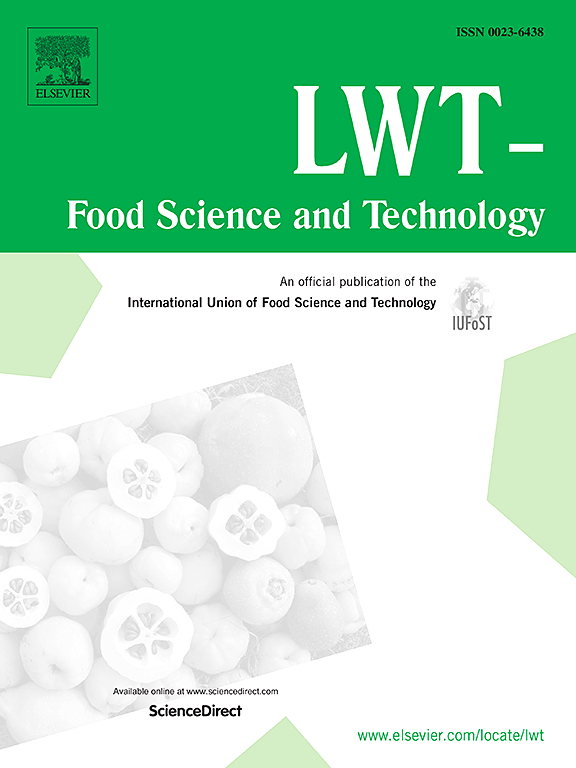Efficient polyphenol extraction from Moringa oleifera Lam. leaves using natural deep eutectic solvents: COSMO-RS screening, ANN-GA optimization and antioxidant activity evaluation
IF 6
1区 农林科学
Q1 FOOD SCIENCE & TECHNOLOGY
引用次数: 0
Abstract
A novel method for extracting polyphenols from Moringa oleifera Lam. (M. oleifera) using natural deep eutectic solvents (NADES) has been developed, with extraction conditions optimized via an artificial neural network-genetic algorithm (ANN-GA) to maximize efficiency. Traditional extraction methods for polyphenols from M. oleifera leaves, such as ethanol extraction, are often associated with low efficiency, environmental concerns, and high operational costs. Furthermore, the empirical selection of solvents and extraction conditions is time-consuming and lacks precision. In this study, 28 NADES were employed to predict the solubility of polyphenol molecules through a conductor-like screening model for realistic solvents (COSMO-RS) model. Based on the results, eight highly effective NADES combinations were selected and experimentally verified. The betaine-maleic acid (Bet-MA) combination with the ultrasonic-assisted extraction showed the highest extraction rate of M. oleifera leaves polyphenol (MOLP), which was 1.56 times that of ultrasonic-assisted ethanol solvent. Simplex centroid mixture design (SCMD) and two-level factor experiments were conducted to optimize the ratio of betaine, maleic acid, and water and identify the most influential extraction factors on MOLP yield. The ANN-GA model was further applied to refine the extraction conditions and analyze their interactions on MOLP content. Additionally, antioxidant assays demonstrated that MOLP extracted with the Bet-MA solvent displayed significant antioxidant activity. In conclusion, this study demonstrates that COSMO-RS and ANN-GA may serve as powerful tools for solvent selection and extraction process optimization, offering a green and efficient approach for polyphenol extraction from M. oleifera leaves. The findings highlight the potential of NADES-based extraction methods for broader applications in the extraction of various bioactive substances, contributing to the development of sustainable and environmentally friendly extraction technologies.

求助全文
约1分钟内获得全文
求助全文
来源期刊

LWT - Food Science and Technology
工程技术-食品科技
CiteScore
11.80
自引率
6.70%
发文量
1724
审稿时长
65 days
期刊介绍:
LWT - Food Science and Technology is an international journal that publishes innovative papers in the fields of food chemistry, biochemistry, microbiology, technology and nutrition. The work described should be innovative either in the approach or in the methods used. The significance of the results either for the science community or for the food industry must also be specified. Contributions written in English are welcomed in the form of review articles, short reviews, research papers, and research notes. Papers featuring animal trials and cell cultures are outside the scope of the journal and will not be considered for publication.
 求助内容:
求助内容: 应助结果提醒方式:
应助结果提醒方式:


